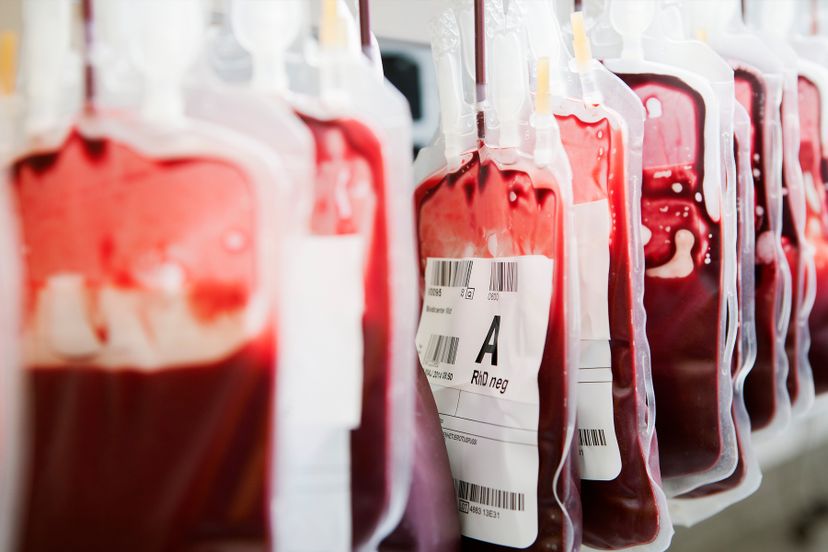
About This Quiz
A vampire is headed straight for you. "I vant to drink your blood," he hisses. To prevent him from sucking the life force straight out of you, you decide to distract him with your amazing knowledge of blood. Take the quiz and prove yourself.The adult human body contains approximately 5 liters, or 5.3 quarts, of blood. That makes up 7 to 8 percent of a person's body weight.
Red blood cells last an average of 120 days in the bloodstream. As these cells age, they're removed by microphages in the liver and spleen.
Hemoglobin is a protein that carries the oxygen throughout the body.
Advertisement
The percentage of blood made up of red blood cells is a frequently measured number known as the hematocrit. The ratio of cells in normal blood is 600 red blood cells for each white blood cell and 40 platelets.
The iron in hemoglobin gives blood its red color. Each molecule of hemoglobin contains four iron atoms, and each iron atom can bind with one molecule of oxygen.
White blood cells help to fight infection.
Advertisement
When the number of white blood cells in a person's blood increases, this is a sign of an infection somewhere in the body. In a normal adult body there are 4,000 to 10,000 white blood cells per microliter of blood.
Neutrophils, which kill bacteria by ingesting them, make up 58 percent of a person's white blood cell count. The other five main types of white blood cells are eosinophils, basophils, bands, monocytes and lymphocytes.
Plasma is 90 percent water. The other 10 percent dissolved into plasma are materials such as proteins, electrolytes, carbohydrates, cholesterol, hormones and vitamins.
Advertisement
People with type O blood are universal donors, because anyone can get a type O blood transfusion. Type O blood has no antigen on the surface that could react with antibodies in the recipient's plasma, which causes a transfusion reaction. Someone with type AB blood is a universal recipient because this blood has no antibodies that could react with donated blood.
Blood is a mixture of cells and plasma.
Platelets are used for clotting.
Advertisement
All blood cells are produced in the bone marrow.
When the body produces blood, it is called hematopoiesis.
Carbon dioxide is formed in red blood cells. It enters the blood and is brought to the lungs to be released as we breathe.
Advertisement
When plasma is allowed to clot, the fluid left behind is called serum.
When both A and B antigens are present, you have type AB blood.
Blood can be donated every eight weeks.
Advertisement
Apherisis is the procedure used when it is necessary to remove a specific component of a donor's blood.